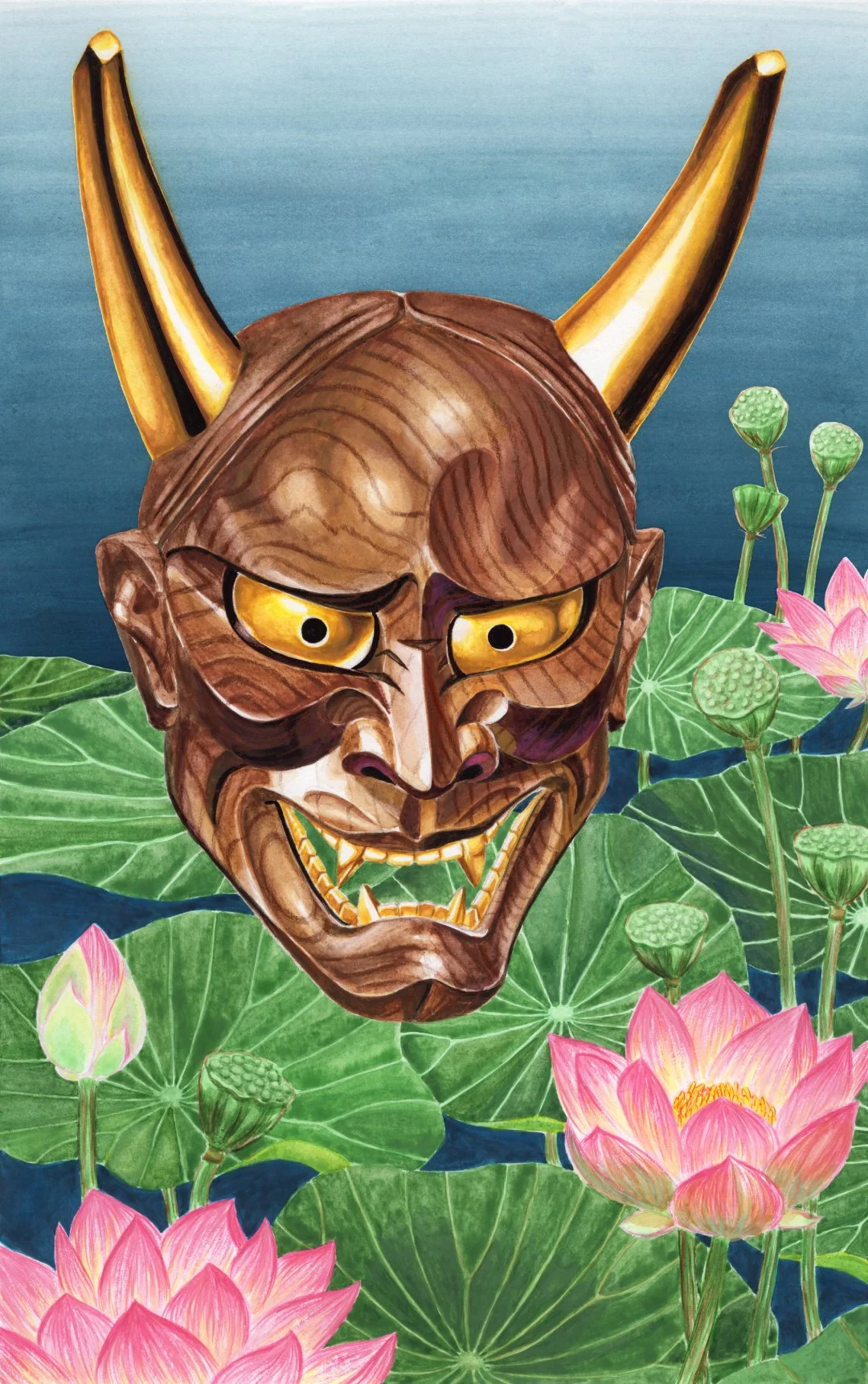East and West Hana Karuta
This project combines both the suits of the Japanese hanafuda deck and the standard western card deck. Historical combined decks have assigned each month to one number so that January pines are aces, February plum blossoms are twos, etc. In my East and West Hana Karuta, the suits have been arranged such that the face cards align with the brights (hikari) and animals (tane). Each bright is represented by a different queen except for Ono-no-Michikaze who is one of the kings. He is an outlier among the brights especially because he is the only card to have a human figure already.
Unlike the standard western deck which privileges European aristocracy with a majority of male face cards, my cards are mixed race, majority female, and include fat, nonbinary, and trans figures. Many have disabilities, and all have a vocation whether it is archery, pottery, weaving, scholarship, music, or something else. I want my cards to be inclusive, but not reductive, so I have given each figure multiple intersectional identities as well as skills and interests outside of their given role.
This deck is a work in progress, so I have only completed the art for the August Susuki Grass Moon/Queen of Hearts, September Chrysanthemum Sake Cup/Jack of Clubs, and my two jokers which are represented by hannya and yamabushi tengu masks. I chose the hannya mask paired with lotus blossoms because there is something pure about a woman’s rage, and the juxtaposition fit with the ethos of the deck. The tengu mask was chosen as a second joker because of the strong association of the long-nosed tengu with gambling and with hanafuda in particular. Supposedly, gamblers would signal their interest in joining an illegal game or purchasing a deck of cards by touching their nose, so gambling dens used yamabushi tengu with his characteristic nose as a sign that illegal games could be found in their establishments.
The Queen of Hearts has a cleft palate, sometimes called a hare lip, as a nod to the folklore regarding the rabbit in the moon who pounds mochi. I have interspersed small details like this throughout the deck as subtle hints to character and identity. Some are obvious if you look, and others such as the King of Hearts are only symbolic allusions which can be parsed if you know card lore.
East and West Hana Karuta is a love letter to my own mixed heritage, to my friends and family, and to my grandparents who first taught me to love card games.




